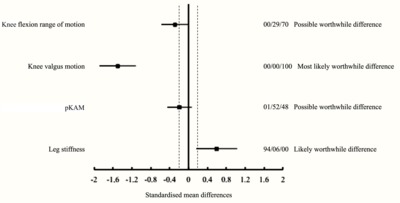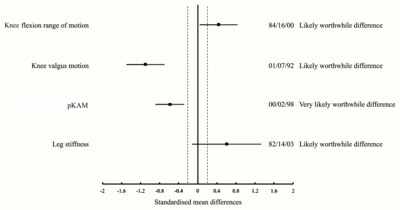De Ste Croix, M., Hughes, J., Ayala, F., Taylor, L. and Datson, N. (2018) The efficacy of injury prevention training is greater in high risk compared to low risk elite female youth soccer players. American Journal of Sports Medicine, 46 (13). pp. 3271-3280. ISSN 0363-5465
robustness training 28-6-18 final.docx - Accepted Version
Available under License Creative Commons Attribution Non-commercial No Derivatives.
Download (3MB)
![[thumbnail of Figure 1.png]](https://eprints.chi.ac.uk/3823/2.hassmallThumbnailVersion/Figure%201.png)

Figure 1.png
Available under License Creative Commons Attribution.
Download (27kB) | Preview
![[thumbnail of Figure 2 Intervention versus Control MDSC.jpg]](https://eprints.chi.ac.uk/3823/3.hassmallThumbnailVersion/Figure%202%20Intervention%20versus%20Control%20MDSC.jpg)

Figure 2 Intervention versus Control MDSC.jpg
Available under License Creative Commons Attribution.
Download (1MB) | Preview
![[thumbnail of Figure 3 Low risk versus High MDSC.jpg]](https://eprints.chi.ac.uk/3823/4.hassmallThumbnailVersion/Figure%203%20Low%20risk%20versus%20High%20MDSC.jpg)

Figure 3 Low risk versus High MDSC.jpg
Available under License Creative Commons Attribution.
Download (1MB) | Preview
Abstract
Background: The efficacy of robustness training on high versus low risk individuals within high risk groups is currently unknown.
Hypothesis/Purpose: The purpose of this study was to explore the efficacy of robustness training on injury risk factors in female youth soccer players and examine if high risk individuals are greater responders to such training
Study design: Controlled laboratory study
Methods: 125 elite youth female footballers on the English FA talent pathway were randomly selected into a training (n = 71) or control group (n = 54). Relative leg stiffness, 2D knee valgus and knee flexion range of motion (ROM) from a single leg counter-movement jump and probability of high knee abduction moment (pKAM) risk were all determined before and after a 16 week robustness training programme. For further analysis participants in the training group were split into high (pKAM >0.80; n = 33) and low risk (pKAM <0.55; n = 33) groups. Magnitude based inferences (MBI) were used to explore differences between the control and intervention and the high and low risk groups.
Results: MBI demonstrated significant beneficial effects in the training group for knee valgus, pKAM and leg stiffness compared with the control group. The control group demonstrated possible worthwhile differences in knee flexion ROM compared to the intervention group. The high risk group demonstrated likely/very likely worthwhile differences compared to the low risk group for all parameters.
Conclusion: Robustness training induces significant beneficial improvements in injury risk factors in female youth soccer players. The beneficial effects of this multi-dimensional program are greater in those individuals who are classified as high risk.
| Publication Type: | Articles |
|---|---|
| Uncontrolled Keywords: | female, injury risk, robustness training, youth, Physical Therapy, Sports Therapy and Rehabilitation, Orthopedics and Sports Medicine |
| Subjects: | G Geography. Anthropology. Recreation > GV Recreation Leisure > GV201 Physical education and training G Geography. Anthropology. Recreation > GV Recreation Leisure > GV557 Sports Q Science > QP Physiology R Medicine > RC Internal medicine > RC1200 Sports Medicine |
| Divisions: | Academic Areas > Institute of Sport > Area > Exercise Physiology |
| Depositing User: | Naomi Datson |
| Date Deposited: | 27 Sep 2018 14:44 |
| Last Modified: | 16 Apr 2021 09:17 |
| URI: | https://eprints.chi.ac.uk/id/eprint/3823 |
 Tools
Tools Tools
Tools
